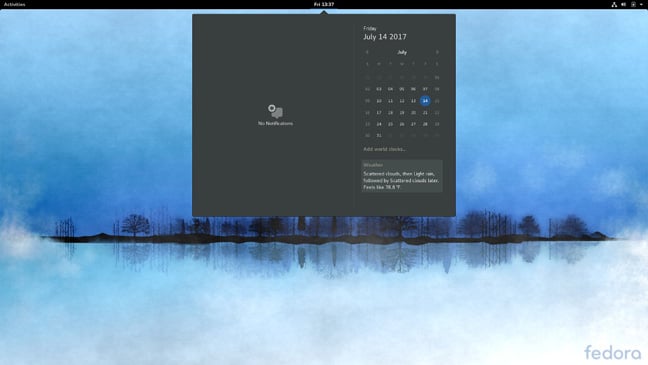
Review Fedora 26, released recently, is a welcome update on the already very nice 25.
As with Fedora’s last couple of releases, there are three major ways to get Fedora 26 – Workstation, Server and Atomic Host. The Workstation release is aimed at desktop users and, by default, will install the GNOME desktop. Server and Atomic Host target, yes, servers and container-based deployments respectively.
I examined Workstation.
Fedora 26 brings an updated kernel, version 4.11, Mesa 17.1.4, and jumps to GCC 7. More visible changes include the latest version of GNOME, 3.24, a new partitioning tool in the Anaconda installer, and much better support for ARM processors, notably an official version of Fedora for Raspberry Pi, which appears to be much more stable than the previous release that appeared to have more caveats than features.
The most obvious change is the move to GNOME 3.24. Nicknamed Portland, this version ships with quite a few new features and improved applications, including Night Light. Night Light is a new settings panel that tints the colour of your displays according to the time of day, although you can also manually control it if you like. In the evening Night Light makes the screen color warmer, which helps prevent sleeplessness and eye strain. The GNOME top bar shows when Night Light is on, and the system drop-down menu allows you to turn it off temporarily. That’s handy if you want to edit photos or similar because what you see is not what you get with Night Light.
